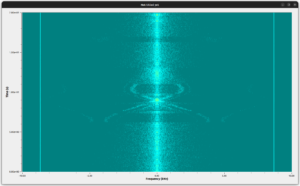Yes, this blog has been a bit quiet recently. This has been partly due to a re-purposing of the blog and the articles now contained in it. Going forward, I will be posting various things of general interest but primarily involving amateur radio astronomy and other topics which may include games such as 온라인 카지노.
Over the last 12 months I have been experimenting with ELF (Extra Low Frequency) and VLF (Very Low Frequency) reception. VLF is typically 10-100kHz and has been a part of the Stanford SuperSID project which detects Ionospheric disturbances (due to solar X-ray storms) by measuring the signal strength of distant VLF transmitters. I shall post more about this at a future date.
ELF radio signals are at even lower frequencies, typically in the human audible range. This range does include a range of natural signals but they cannot travel beyond the ionosphere, so technically are not radio astronomy. Signals vary and include whole-Earth resonant frequencies, insects flying near the antenna, and thunderstorms.
Thunderstorms are the easiest and most distinctive to detect. A lightning strike produces a short ‘spike’ across the radio spectrum which we usually hear as lightning static. However, if the travel distance is long enough, dispersive effects will stretch the lower frequencies out into an ascending or descending whistle. This is known as a “whistler” and can have an other-worldly sound to them. The paths have to be very long — typically this requires the radio waves to travel along the Earth’s magnetic field, out into space, and back down to the magnetic conjugate of the source. After doing this, they can reflect back again. Multiple reflections can result in more complex whistle patterns.
Living in the Southern Plains of the US, in Wichita Falls (Texas), we get a lot of thunderstorms in spring. I tried to detect these whistlers last year and although I thought I heard them, I was not entirely convinced. Two days ago I tried again, and managed to capture the waterfall charts below. These show spectra of the received signal with time running down the side (most recent at the bottom). You can see clear arcs from each whistler.
These are almost certainly two-hop whistlers. The source storm was about one county away at the time. My magnetic conjugate is in the South Pacific – an area with few thunderstorms. So it is likely I was hearing signals from the local storm after they had travelled to the South Pacific and back including two journeys out into space! I think this helps to illustrate the raw power of even a moderate thunderstorm, which is easy to forget.
How did I make these detections? The antenna was a whip antenna of only a few meters, feeding a FET front end (and protection diodes). The signal was then fed through an amplifier, a low pass filter (to remove broadcast radio), and a sharp high pass filter (f0=400Hz) to cut power hum and the stronger harmonics but keep most of the audible frequencies. The output was fed to an audio amplifier and speaker. The signal was also fed through an audio sampler into a laptop which was running gnuradio which created these waterfall charts.

